

Brent Sherwood (Pasadena – USA)
Opening keynote – Space Architecture
Brent Sherwood is a space architect with 30 years of professional experience in the space industry. At Boeing for 17 years, he led concept engineering for human exploration of Mars and the Moon, manufacturing engineering of the International Space Station modules, and program development for many commercial and space science projects, some that happened (e.g. Sea Launch) and many others now becoming real (e.g. Bigelow modules on the ISS, and Mars Sample Return). At the Jet Propulsion Laboratory since 2005, he is currently Program Manager for planetary mission formulation. He funds and coaches teams that conceive and propose science mission concepts to NASA for solar system exploration.
Brent Sherwood has a B.A. in liberal arts from Yale, a Master of Architecture from the Yale School of Architecture, and an M.S. in aerospace engineering from the University of Maryland. He has published and presented over 50 papers on the exploration, development, and settlement of space; including the AIAA book Out of This World: The New Field of Space Architecture. He is a member of AIAA, the American Institute of Aeronautics and Astronautics, where he chairs the Space Architecture Technical Committee, and sits on the Executive Committee for the annual Space Forum conference. He also serves on the Board of the American Astronautical Society.

Friday 4th of May 2018 at 1.50 pm

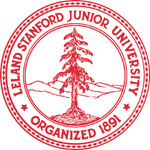
Dr. Burton H. Lee PhD MBA
(Lecturer, European Entrepreneurship & Innovation, School of Engineering, Stanford University; Managing Director, Innovarium Ventures, Silicon Valley – USA)
Space Industry
Dr. Burton Lee PhD MBA is a globally recognized expert in growth, design, innovation, E-ship & ecosystems with 15+ years experience in venture finance, senior management and technology for seed–stage investment; venture–backed startups; global technology corporations (GE, HP, Daimler); govt executive service; STI & economic development agencies (NSF, NIH, NASA, European Commission); & top research universities. Burton lectures on 'European Innovation & Entrepreneurship' in Stanford's School of Engineering, based out of the ME Dept Design Group. As Managing Director of Innovarium Ventures, Dr. Lee provides senior strategic, financial & technical leadership and advisory services to the global innovation sector.
Burton’s professional history within the global space industry dates back to 1988 when he managed the fledgling Stanford small satellite program as a student. In the early 1990’s, Lee co–founded Spaceport America, New Mexico, which today serves as the home base for Virgin Galactic's space tourism flight operations. As a graduate engineering student at Stanford University, he also served as a research engineer on the Space Shuttle’s Thermal Protection System (TPS) and as a NASA Johnson Space Center Graduate Fellow developing Space Station telerobotics systems. He also has advised NASA Ames in the area of new venture development and spin outs, as well as on technology transfer, commercialization and Entrepreneur–in–Residence (EIR) programs. Most recently, Burton co–founded Space Angels 1.0, which is today the leading angel investor community focused on seed and early stage space and aviation startups from around the globe.

Friday 4th of May 2018 at 2.35 pm
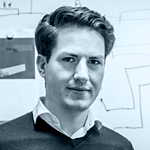

Prof. dr. Raf Ramakers (UHasselt – Belgium)
Beyond DIY – Empowering Engineering Novices to Build Sensor Systems
After receiving a master degree in computer science from Hasselt University in 2012, Raf Ramakers started a PhD in human–computer interaction at the same university. In 2016 his PhD dissertation entitled “End–User Control over Physical User–Interfaces” resulted in multiple patents and was awarded with the Belgian dissertation awards in both computer science (FWO IBM innovation award) and ICT (FWO Nokia scientific prize). After a few research stays at Autodesk Research and the Hasso–Plattner Institute, Raf Ramakers was appointed as a faculty member at Hasselt University where he teaches computer science and human–computer interaction and conducts research that will empower anyone to build sensor–based systems.
With advancements in thin–film electronics, interactivity can seamlessly blend in the environment instead of moving interactive experiences to digital devices. Making such sensor systems is however challenging and requires expertise and techniques from many different fields. In contrast years of research and development have resulted in tools that empower users, without a technical background, to make digital interfaces. One popular example are webpage builders (e.g. WordPress) which allow virtually everyone to make websites themselves. This talk focuses on how and why we should translate these usability concepts to building sensor–based systems.

Friday 4th of May 2018 at 3.55 pm


Pauline van Dongen (Arnhem – The Netherlands)
Between sensing and making sense: a material aesthetics view on fashiontech
Pauline van Dongen is a Dutch fashion designer specialised in wearable technology. As a creator intrigued by the notion of interactivity in fashion, she researches the human body in relation to its surroundings. She is fascinated by concepts of change, movement, energy and perception, as she believes the future of fashion lies in its premise to be dynamic and changing. To her, technology is not a mere tool, but rather one of aesthetics. There’s a strong focus on materiality in her work and the way it is capable of enhancing expression. The fact that we can now program it pixel by pixel, allows us to design new types of behaviour and create materials that can actively play on the body. The language and expression of the body give form to the garment. This establishes an intimate and personal connection with the wearer, thereby turning technology in an intuitive notion.
Pauline van Dongen is preparing her doctorate in industrial design at the Technical University of Eindhoven (Holland) specializing in fashion and technology. Her objective is to integrate the latest innovations in wearables in smart clothing designs which result practical in addition to stylish. Pauline van Dongen has been named as one of MIT Technology Review, Spanish edition's Innovators Under 35 Europe 2017.
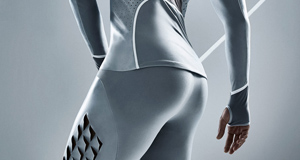
Friday 4th of May 2018 at 4.20 pm


Eleni Stavrinidou (Linköping University – Sweden)
Electronic Plants
Eleni Stavrinidou received her BSc in Physics in 2008 from Aristotle University of Thessaloniki (Greece) and then her MSc in Nanotechnology from the same university, in 2010. She then joined the Department of Bioelectronics of EMSE (France) where she completed her PhD on Organic Bioelectronics in 2013. Her work there focused on understanding and engineering ion transport in conducting polymers. Eleni then joined the Laboratory of Organic Electronics (LOE) of Linköping University as a Postdoctoral Fellow where she developed organic electronic devices integrated within living plants. Her work introduced the concept of Electronic Plants. In 2017 she became an Assistant Professor in Organic Electronics at Linköping University and she is leading the Electronic Plants group of LOE. Eleni holds a Marie Curie Sklodowska Individual Fellowship, a Swedish Research Council (VR) Starting Grant and she is the Coordinator of HyPhOE–FET–OPEN project. Her research interests focus on electronic interface with plants for energy applications, plant control, hybrid systems and electronic materials–plant tissue interaction.
Plants are everywhere, an indispensable part of our ecosystem and essential for our survival. Electronics are also everywhere, in our homes, in the cities, central part of our lives. Can we add electronic functionality to plants and interact with them at another level? Can plants consist part of our technology? I will present our findings and efforts to merge electronics with plants. Electronic devices and circuits are fabricated within the internal structure of the plant and bioelectronics devices are applied to plants and control their functions. We aim to establish a revolutionary symbiosis between plants and technology opening pathways for integration in urban settings, agriculture and forestry.
In collaboration with Stadstriënnale 5 – SCREEN–IT

Friday 4th of May 2018 at 4.45 pm

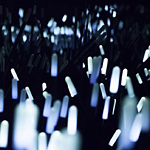
Daan Roosegaarde (Rotterdam – The Netherlands)
Closing keynote – Landscapes of the Future
Dutch artist and innovator Daan Roosegaarde (1979) is a creative thinker and maker of social designs which explore the relation between people, technology and space. Roosegaarde has been driven by nature's gifts like light emitting fireflies and jellyfish since an early age. His fascination for nature and technology is reflected in his iconic works such as Smog Free Project (the largest outdoor air purifier which turns smog into jewellery) and Van Gogh Path (bicycle path which glows at night). Roosegaarde studied Fine Arts and graduated from The Berlage Institute in Rotterdam with a Master in architecture. He founded Studio Roosegaarde in 2007, where he works with his team of designers and engineers towards a better future.
Roosegaarde has been the recipient of numerous prestigious awards including the London Design Innovation Medal, the INDEX Design Award, DFA Gold and Grand Award Hong Kong, LIT 2017 Lighting Designer of the Year Award, Platinum A'Design Award 2017, D&AD Awards 2017, Core77 Design Awards 2017, Dutch Artist of the Year 2016, the World Technology Award, two Dutch Design Awards, the Charlotte Köhler Award, and China's Most Successful Design Award. He exhibited at the Design Museum London, Stedelijk Museum Amsterdam, Rijksmuseum, Tate Modern, Tokyo National Museum, Le Musée des Arts Décoratifs Paris, Victoria & Albert Museum, and various public spaces across the globe. Through lectures across the world Daan frequently shares his visionary ideas and projects. Daan Roosegaarde has been selected by Forbes and Good 100 as a creative change maker and a Young Global Leader at the World Economic Forum. He is currently a visiting professor at Tongji University in Shanghai.
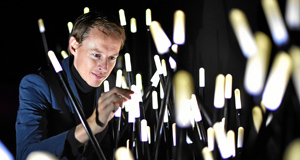
Friday 4th of May 2018 at 5.30 pm


Frederik De Wilde (Brussel – België)
Het Zwarste–Zwart
Cross–over kunstenaar Frederik De Wilde werkt op het microscopische snijvlak van wetenschap en kunst, een gebied dat hij zelf beschrijft als “post-media art and post-digital aesthetics.” Zijn onderzoek naar koolstofbuisjes heeft een zwarter–dan–zwarte kleur opgeleverd, die onze perceptie van de realiteit fundamenteel bevraagd en verstoord. Daar zit ook de poëtica en kunst in volgens de kunstenaar onderzoeker. De Wilde's zwarter–dan–zwart is een nanotechnologisch gefabriceerd materiaal dat alle licht absorbeert en kadert in zijn onderzoek naar hoe we 'bijna niets' kunnen representeren met 'bijna niets'. Onmogelijk? Blijkbaar niet. Net zoals de atoomklok een referentie is voor tijd (meting), zo is ook dit zwarter–dan–zwart een nieuwe maatstaf voor de kleur zwart, en die in 2019 een plekje zal vinden op de maan in samenwerking met NASA, SpaceX, Astrobotic en Carnegie Mellon University.
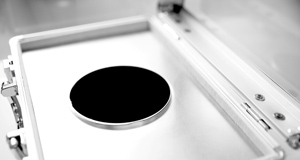
Zaterdag 5 mei 2018 om 13.45 uur

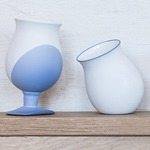
Piet Stockmans (Genk – België)
Cohabitatie tussen kunst en design
Piet Stockmans is vormgever, ambachtsman en kunstenaar in porselein. Hij werd geboren in 1940 in Leopoldsburg. Zijn opleiding genoot hij in de PXL–MAD school of Arts in Hasselt. In 1963 begon hij bij Mosa als stagiair, vervolledigde zijn kennis over porselein in Duitsland en startte als ontwerper voor Maastricht Porselein. In 1969 richt hij de afdeling Productdesign op aan de LUCA School of Arts. En vervolgens in 1987 de Studio Pieter Stockmans. Hij stelt wereldwijd tentoon en zijn handgemaakte collectie wordt verkocht aan toprestaurants en bedrijven in binnen– en buitenland. In de loop der jaren ontving hij talrijke prijzen waaronder de Red Dot award, was hij Cultureel Ambassadeur van Vlaanderen, won de Henri Van de Velde prijs voor de loopbaan en ontving de prijs van de Vlaamse Gemeenschap voor Beeldende Kunsten.

Zaterdag 5 mei 2018 om 14.10 uur
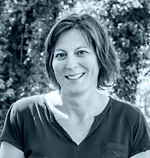

Dr. Natalie Beenaerts (UHasselt – België)
Klimaat en biodiversiteit: het onderzoeken waard?
Natalie Beenaerts is lid van het Centrum van Milieukunde en is de project leider van het Field Research Centre, gelegen aan de rand van het Nationaal Park Hoge Kempen (NPHK). De Ecotron Hasselt University is een van de bakens van dit onderzoekscentrum. Als FRC leider zoekt Natalie continu naar opportuniteiten tot onderzoekssamenwerking met locale en internationale partners om zo de ecologie, economie en gevolgen van stressfactoren — zoals klimaatverandering — op biodiversiteit van het NPHK beter te verstaan.
Klimaatverandering is een feit! In dit opzicht worden meestal de mogelijke gevolgen voor onze gezondheid in het daglicht gesteld, maar de effecten hiervan op ons natuurlijk kapitaal, toch de bron van ons welzijn, worden veel minder onderzocht. Daarom bouwden we de Ecotron Hasselt University (Limburg, België). Dit is een 100m lange onderzoeksfaciliteit waar in 12 grote semi–geautomatiseerde ecosysteemkamers op gecontroleerde wijze de effecten van een veranderend klimaat op biodiversiteit boven en ondergronds bestudeerd worden.

Zaterdag 5 mei 2018 om 14.45 uur
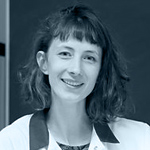

Elise Elsacker (Brussel – België)
Biotechnologische materialen voor architecturale toepassingen
Elise Elsacker, onderzoeker aan het Architectural Engineering Lab van de Vrije Universiteit Brussel (VUBARCH), recycleert alles, in het bijzonder plastic. Ze wil aantonen dat je perfect zonder plastic verpakking kunt leven waardoor je ecologische voetafdruk aanzienlijk vermindert. Haar strategie voor een transitie naar een plasticloos leven bestaat uit vier R’en: Refuse, reduce, reuse en recylce. Dr. Elise Elsacker is tevens medeoprichter van Glimps, een strategisch designbureau gespecialiseerd in biofabricage. Ze ontwerpen biologisch afbreekbare objecten met behulp van nieuwe materialen en creëren ervaringen op het snijvlak van design, biologie en samenleving. Glimps is een baanbrekende pionier in het gebruik van myceliummaterialen, een nieuw materiaal op basis van paddenstoelen. Het hoofddoel van Glimps is om een duurzaam antwoord te bieden op de milieuproblematiek en de verspilling van grondstoffen en materialen tegen te gaan.
Elise Elsacker studeerde architectuur in Gent en in Brussel. Ze kwam als tweede laureate uit de bus van de WATS–campagne (Woman Award in Technology and Science). Ze verwierf interdisciplinaire wetenschappelijke inzichten door samen te werken met bioingenieurs, materiaalwetenschappers, champignonkwekers en designers.

Zaterdag 5 mei 2018 om 15.10 uur

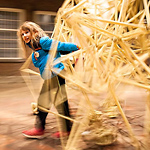
Theo Jansen (Scheveningen – Nederland)
Strandbeesten
Kunstenaar van het jaar Theo Jansen is al jaren bezig met het construeren van strandbeesten. Deze beesten zijn opgebouwd uit elektriciteitsbuis en worden voortbewogen door de wind. De strandbeesten lijken net echte dieren. Ze kunnen hun poten bewegen en hun vleugels laten wapperen. Theo Jansen heeft dan ook goed bestudeerd hoe de lichaamsdelen van de strandbeesten eruit zien en waar de scharnierpunten moeten komen te liggen. De scharnierpunten zijn de punten waar de beweging ontstaat, net als bij ons de knieën en ellebogen. Het loopmechanisme van de poot bestaat uit een samenspel van plastic buizen, die met tiewraps aan elkaar zijn vastgemaakt. Net als echte dieren hebben de strandbeesten dure Latijnse namen. Het allereerste strandbeest dat Theo Jansen maakte, was de Animaris Vulgaris. Een heel groot strandbeest dat hij in 2000 maakte, heet de Animaris Unimus. Er bestaan ook tweelingstrandbeesten en die worden Animaris Siamesis genoemd.
De carrière van Theo Jansen begon met een studie natuur– en scheikunde aan de Universiteit van Delft. Dat is niet echt wat je bij een kunstenaar verwacht, maar bij zijn strandbeesten komt veel techniek kijken. Ze moeten zó licht zijn dat ze met hulp van de wind kunnen bewegen, maar ook moeten ze precies zwaar genoeg zijn om niet omver te worden geblazen. Om dat voor elkaar te krijgen, moet alles natuurlijk precies afgemeten en uitgerekend worden. Op een gegeven moment besloot Theo Jansen dat hij kunstenaar wilde worden. Alles leerde hij zichzelf, een echte autodidact dus. Hij besloot de dieren zelf te gaan maken en hij noemde ze 'strandbeesten'. Dat was in 1990. Vanaf dat moment doet Theo Jansen niets anders meer. Hij wil dat ze steeds beter worden, zodat ze straks zonder hulp, in grote kuddes, op het strand kunnen leven.

Zaterdag 5 mei 2018 om 16.10 uur